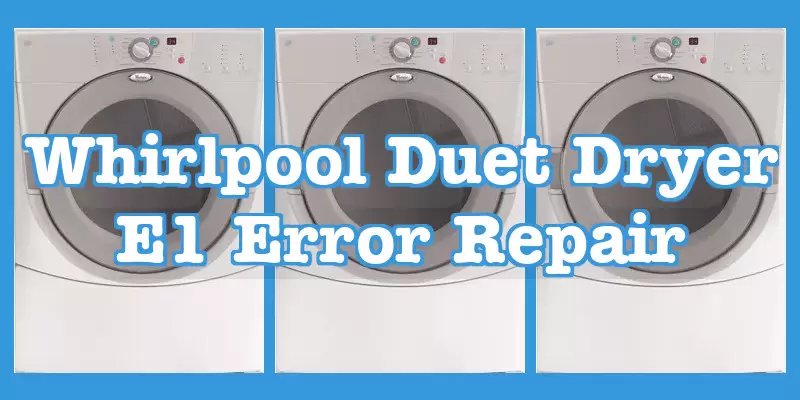
Imagine this: you’re driving your car, and suddenly, the check engine light appears. You could ignore it, but eventually, your car might break down halfway through a road trip. The same goes for your dryer. The E1 error is its way of telling you something isn’t right. Specifically, this error often relates to temperature sensing. Your dryer struggles to regulate its internal temperature, which can lead to longer drying times or even overheating. If left untreated, these issues can spiral into more serious malfunctions, potentially burning a hole in your pocket for repairs down the line. So, let’s dive deeper and see why this error should not be swept under the rug.
Understanding the E1 Error Code
The E1 error code on your Whirlpool dryer is akin to a warning sign, like a road signal saying “Caution!” This code typically points to a problem with the thermistor, a small component with a big role. Its job? Measure the temperature inside your dryer and ensure everything runs smoothly. Think of the thermistor as the temperature control room of your dryer. If it malfunctions, it’s like the air conditioning in your house going haywire, making things too hot or too cold.
When the thermistor isn’t functioning properly, your dryer can’t accurately gauge how hot it’s getting. This can cause it to overheat or underheat. You might find your clothes are still damp after a cycle, or the machine is hotter than usual to the touch. These aren’t just minor inconveniences—they’re warning signs. Continuing to use the dryer without addressing this issue is like walking on thin ice.
Here’s the deal—fixing it early can prevent further damage. It usually involves replacing the thermistor—a relatively straightforward fix. If you’re handy around the house, you might even be able to do it yourself with a bit of guidance. But if you let it slide, you could face more extensive damage, like burnt-out internal components, which could end up being quite costly.
The Risks of Ignoring the Error
You might be wondering, “What’s the worst that could happen if I just ignore the E1 error?” Well, quite a bit, actually. Continuously using a malfunctioning dryer can lead to a buildup of heat, which not only affects your laundry but could pose serious fire hazards. It’s like using a toaster that’s prone to overheating—sooner or later, you’re risking a burnt breakfast or worse.
Moreover, a malfunctioning thermistor can lead to inefficient drying processes. You’ll notice your clothes take longer to dry, consuming more electricity and potentially raising your utility bills. Not to mention the wear and tear on your dryer, which could be working overtime trying to achieve the desired dryness, only to fall short each time. This excessive strain could reduce the lifespan of your dryer significantly.
But don’t worry, there’s light at the end of the tunnel. Addressing the E1 error promptly can save you from these headaches. A simple check-up by a professional or a bit of DIY repair could bring your dryer back to its prime. It’s like taking your time to replace a faulty light bulb before everything gets too dark to navigate.
Next Steps and Preventative Measures
Alright, so you’re convinced fixing the E1 error is the way to go. What’s next? First, consider consulting your Whirlpool dryer’s manual. It might offer diagnostic tips and troubleshooting steps specific to your model. If the manual suggests replacing the thermistor and you’re up for a DIY challenge, you can find tutorials online or even consult Whirlpool customer service for guidance.
However, if you prefer steering clear of the nuts and bolts, calling in a professional could be your best bet. They know these appliances inside out and can ensure every nook and cranny is in tip-top shape. It’s like having a trusted mechanic giving your car a thorough checkup—it’s about peace of mind and long-term benefits.
As for preventing future errors, regular maintenance is key. Think of it like your annual doctor’s visit—catching little issues before they snowball into bigger problems. Clean the lint trap after every load and periodically check the vent for blockages. These simple habits can go a long way in ensuring efficient airflow and temperature regulation. Ultimately, a little care today can save you a lot of hassle tomorrow.